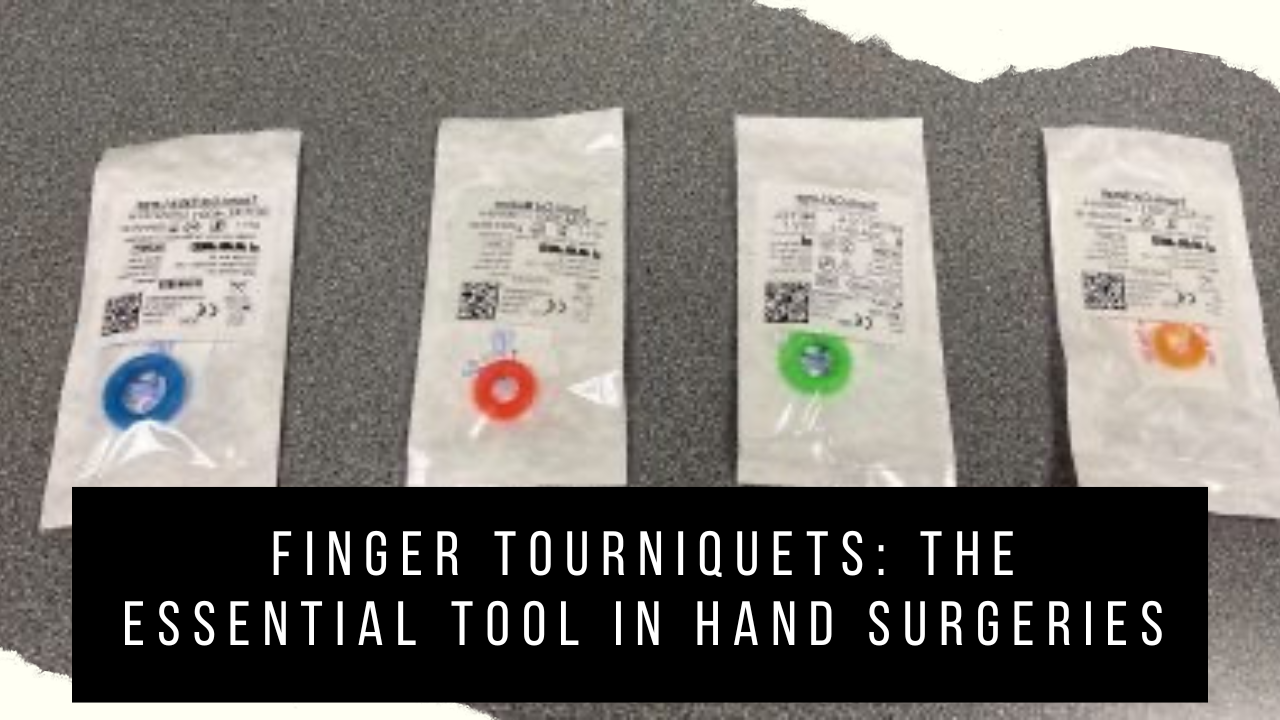Have you ever wondered how surgeons manage to control bleeding during delicate hand surgeries? One of the key tools they rely on is the finger tourniquet. If you’re not familiar with this device, let me give you a quick overview.
A finger tourniquet is a bandage that wraps around a person’s finger and is tightened to cut off blood circulation. This simple yet vital tool can help stop serious bleeding when applied quickly and correctly, making it indispensable in hand surgeries.
Why Finger Tourniquets Are Essential?
Finger tourniquets are designed to provide a clear, blood-free view of the surgical field, which is crucial for precision in hand surgeries. By temporarily cutting off blood flow to the finger, the surgeon can work more efficiently and accurately without the obstruction of excessive bleeding.
This is particularly important in procedures involving delicate structures like tendons, nerves, and small blood vessels.
Selecting the Right Size
Before using a finger tourniquet, it’s important to ensure that you have the correct size for the individual’s finger. Finger tourniquets come in various sizes, ranging from small to extra-large, to accommodate different finger dimensions.
Using the right size is critical because an ill-fitting tourniquet may either fail to stop the bleeding or cut off circulation excessively, leading to potential complications.
Applying the Tourniquet Correctly
Once you’ve selected the appropriate size, the next step is to apply the tourniquet correctly. The tourniquet needs to be tight enough to stop the bleeding but not so tight that it completely cuts off circulation for an extended period.
You should apply the tourniquet firmly, ensuring it stays in place. Additionally, applying pressure with your other hand can help keep it tight initially. However, constant monitoring is necessary to ensure it doesn’t become too tight over time.
Monitoring Tightness and Timing
It’s essential to keep an eye on the tightness of the tourniquet. If it becomes too tight, you must loosen it slightly and reapply it. This adjustment helps prevent any damage to the finger tissues caused by prolonged lack of blood flow. It’s also crucial to remember that a finger tourniquet should not remain on the finger for more than an hour.
Prolonged use can lead to tissue damage and other complications. As a scrub nurse, you play a vital role in reminding the surgeon to release the tourniquet at appropriate intervals.
Potential Risks and How to Minimize Them
While finger tourniquets are highly effective, they must be used correctly to minimize potential risks. If a tourniquet is left on for too long or applied too tightly, it can cause ischemia, where tissues are deprived of oxygen, leading to damage or even necrosis.
To avoid these risks, strict adherence to guidelines is necessary. Regular monitoring and timely release of the tourniquet are essential steps to ensure safe and effective use.
In conclusion, finger tourniquets are invaluable tools in hand surgeries, providing surgeons with a clear view of the surgical field by controlling bleeding effectively. However, their benefits come with the responsibility of correct usage.
By selecting the appropriate size, applying the tourniquet properly, monitoring its tightness, and ensuring it’s not left on for too long, healthcare professionals can use finger tourniquets safely and efficiently.
As a scrub nurse, your vigilance and reminders can significantly enhance the safety and success of the surgery.
By understanding and applying these principles, you’ll not only enhance the surgical process but also ensure the safety and well-being of the patients under your care.
So, the next time you’re in the operating room, remember the critical role of the finger tourniquet and the importance of using it correctly. This knowledge will empower you to make a significant difference in surgical outcomes and patient safety.


Good day! I just want to give you a big thumbs up for your excellent information you have here on this post. I am coming back to your web site for more soon.